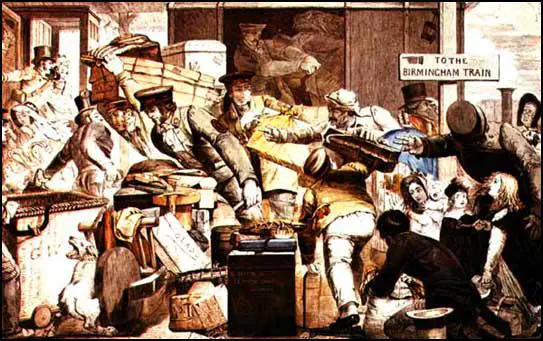Railway Gauge
When George Stephenson was building the Stockton & Darlington Railway he decided the rail gauge should be just over 4 ft 8 ins (1.44m). The reason for this was that was the width of the wagonway at Killingworth Colliery. However, after Stephenson had made this decision, other railway chief engineers followed his example and used the same rail gauge.
When Isambard Brunel was building the London to Bristol line in 1838 he decided to use what became known as the broad gauge (2.2 m) instead of the standard gauge (1.44m) on the line. Brunel argued that by using a wider track, he could provide larger and faster locomotives. It was also pointed out by Brunel that the broad gauge was safer and that locomotives would be less likely to leave the rails on sharp bends.
By 1844 the Great Western Railway had opened a new line from Bristol to Exeter and from Bristol to Gloucester where it met the standard gauge of the Birmingham & Gloucester line. This created problems as passengers and goods had to be transferred from one train to another.
In 1845 a Royal Commission looked into the subject of the railway gauge. After a long investigation that included committee members asking railway engineers over 6,500 questions, it was decided to recommend the use of the standard gauge. The Gauge Act passed by Parliament in 1846 made the standard gauge compulsory for all new railways. However, the Great Western Railway retained its broad gauge until 1892, when it was converted to the standard gauge.

